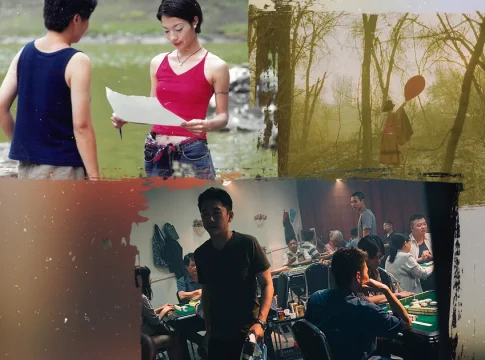Unpacking Queer Narratives: The Magic of Time and Memory at the Queer East Film Festival
Time Travel Through Film
If there’s one thing that the Queer East Film Festival showcased this year, it’s the extraordinary ability of cinema to bridge the past and the present. Our Emerging Critics cohort dove headfirst into a rich tapestry of films that don’t just entertain but resonate deeply, especially within the LGBTQIA+ community.
Nostalgia Meets the Silver Screen
Yuki Yoshikawa kicked off the conversation by reflecting on their cinematic journey through a pair of Taiwanese classics from the 1980s and 2000s. The double feature of Where Is My Love? and Incidental Journey captured both hearts and imaginations. Why? Because these films effortlessly blend nostalgia with harsh realities, even for those who’ve never set foot in Taiwan. Yoshikawa revealed, "There’s something nostalgically captivating about the film’s worn texture and faded colors," highlighting how cinema can evoke emotions tied to experiences we’ve never lived.
What’s particularly poignant here is Yoshikawa’s fascination with the queer identities portrayed in these flicks. The films delve into the struggles of coming out, heartbreak, and the quest for acceptance during a time when such truths were concealed under heavy societal pressure. Characters like Ko and Pierre from Where Is My Love? embody the struggle for authenticity, making viewers feel as though they’re carrying a piece of that history along with them.
Queering Memory: More Than Just Pixels
Pear Nuallak weighed in with a unique twist on time: the concept of queering temporal experiences. They beautifully articulate how narrative can manipulate time, akin to a surreal drag performance. Let’s take a moment to appreciate Vocal Parallels, a film-lecture that blends burlesque and historical critique, dissecting the layers of Soviet cultural history in a fabulously draggy manner.
The stark shift to Silent Sparks reveals a more intimate depiction of time—one that lingers on the often painful journey of a gay Taiwanese gangster named Pua as he navigates love and societal expectations. The film’s slow cinematic rhythm invites audiences to feel every heartbeat and sigh, illustrating how life can often feel like a prison in itself.
The Healing Power of Cinematic Storytelling
While the festival showcased films that deal with heavy themes of loss and longing, each narrative reaffirmed the importance of queer existence across timelines. Both Yoshikawa and Nuallak demonstrate that cinema does more than tell a story; it creates pockets of memory—even for those who weren’t alive to experience the realities depicted on screen.
Final Thoughts
In a world where queerness often intersects with struggles and resilience, these films offer far more than visual indulgence. They serve as a conduit for connection, allowing audiences to confront personal and shared histories. So whether you find yourself lost in nostalgic reminiscence or unpacking complex emotional layers, the magic of the Queer East Film Festival reminds us that the stories of queer lives are timeless—ever-relevant and forever impactful.
Let’s keep the dialogue flowing, and celebrate the rich diversity of queer narratives that push boundaries and craft new realities!

Covers viral stories, pop culture, and breaking celebrity news.
Bio: Jamie has a sharp eye for what’s buzzing online, tracking social media trends and entertainment headlines around the clock.

